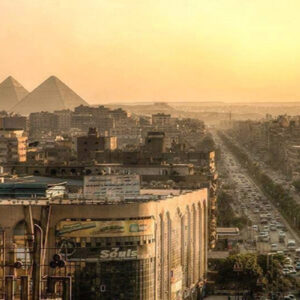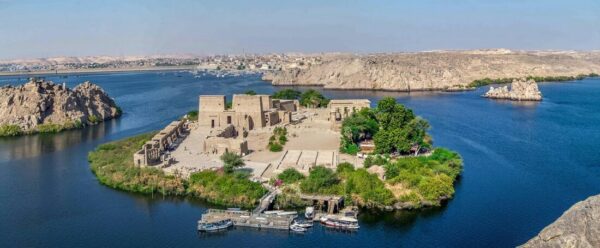King Ramesses II
A summary of the life of King Ramesses II:
King Ramesses II is the third pharaoh of the rulers of the Nineteenth Dynasty. He is also known as Ramesses the Great. His successors and subsequent rulers called him the great-grandfather. His personal name is “Ramses Meri Amun Ra,” as King Ramesses II is the son of Pharaoh “Seti I” and Queen “Tuya.”
He was called the co-ruler of his father, as he accompanied his father on many campaigns, such as the military campaigns against Nubia, the Levant, and Libya, when he was fourteen years old. Before the age of 22, King Ramesses II himself was leading campaigns with his sons to Nubia, after the death of Pharaoh Seti I. King Ramesses II assumed power.
King Ramesses II married many women and ruled the country for nearly 67 years. He married some of the princesses of the royal family, such as Queen Nefertari and West Nefert. He also married the daughter of the King of Kheta and gave the Egyptian name “Maat Neferu Ra.” His male children held important positions. In the state, the most important of his sons is his son, “Khaemwas,” whose father thought about making him crown prince in the thirtieth year of his rule, but he died in the fifty-fifth year of his father’s rule, and many of his sons also died during his reign, so his thirteenth son, “Merenbtaj,” from his wife, “Est,” assumed power after him. Neferet” and assumed the throne.
Acts of King Ramesses II during his reign:
The first period of his reign focused on building cities, temples, and archaeological monuments. King Ramses II also founded the city of Be-Rameses in the Nile Delta, as a new capital and a main base for his campaigns into Syria. This city was built on the ruins of the city of Avaris, the capital of the Hyksos.
When he assumed power, King Ramesses II was interested in consolidating his rule, so he ordered the end of all unfinished works that his father, Pharaoh Seti I, had begun, such as the Abydos Temple. He then thought about exploiting the desert mines and followed the policy of his father, King Seti I, in doing so. The number of members of the Egyptian army during the reign of King Ramesses II reached about 100,000 men, which was a tremendous force that he used to strengthen Egyptian influence.
Campaigns and battles led by King Ramesses II:
Ramesses II led many campaigns north to the Levant, and during the fourth year of his reign he led the Second Battle of Kadesh, where the Egyptian forces under his command clashed with the forces of Muthalis, king of the Hittites. This battle continued for fifteen years, but neither side was able to defeat the other, and in In the twenty-first year of the reign of King Ramses II, he established a peace treaty between Egypt and the Hittites with Khatu Sheli III. It was the oldest peace treaty in history. King Ramesses II also established the city of Barramis in the eastern delta, and from there he conducted his battles with the Hittites.
Monuments built by King Ramesses II:
During his reign, King Ramses II built a large number of buildings and temples greater than any other king, as he began to complete the temple that his father, Pharaoh Seti I, had begun in Abydos. King Ramses II also erected the wonderful masterpiece in the Abu Simbel Temple, and inside the temple there are four huge statues.
For King Ramesses II, King Ramesses II erected many obelisks, including an obelisk that still stands in Luxor Temple, and another obelisk currently in France in Place de la Concorde in Paris that was moved by a French engineer called Lebas, and the statue of King Ramesses II was moved and placed in the most famous square in Cairo (Bab El Hadid Square).
Its name was changed to Ramses Square, then it was moved to central Cairo in front of the railway station and then to the pyramids area in Giza Governorate, to carry out renovations on it for a year until the completion of the construction of the Grand Egyptian Museum.
Death of King Ramesses II:
King Ramses II was buried in the Valley of the Kings in Cemetery No. KV7, but his mummy was transferred to the cache of mummies in Deir el-Bahri, and then transferred to the Egyptian Museum in Cairo five years later. King Ramses II’s height is 170 cm, and it is believed that he suffered from severe rheumatism in the joints. In his late life, he also suffered from gum disease.
Egypt Tours to The Monuments Built by King Ramesses II
-
From $1440 🎗 10% OFFAswan, Cairo, Egypt, Luxor

 Sale! Add to cart
7 Days Deluxe Nile cruise + Domestic Flights
Sale! Add to cart
7 Days Deluxe Nile cruise + Domestic Flights7 Days Tour To Egypt with Cairo, Aswan, Luxor, and Nile Cruise
Rated 5.00 out of 5Nile Cruise$2,000.00$1,600.007-Days Tour To Egypt with Cairo, Aswan, Luxor, and Nile Cruise Egypt Cruis Era provides you with a 7 days tour to Egypt that covers the essentials of Cairo, Aswan, Luxo -
Why you’ll love this trip: ideal choice for first-time visitors looking for an introduction to ancient Egypt. Explore the great pyramids of Gi
-
From $2078 🎗 0% OFFAswan, Cairo, Egypt, Giza, Luxor

 Sale! Add to cart
10 Days Deluxe Nile cruise + Domestic Flights
Sale! Add to cart
10 Days Deluxe Nile cruise + Domestic Flights10 Day Luxury Egypt Tours and Nile Cruise
Rated 5.00 out of 5Egypt Tour Packages$3,500.00$2,800.00Why you’ll love this trip: Experience the mysteries and treasures of Egypt Embark on a leisurely paced 4-night cruise on the Nile, the world’s -
8 Days Cairo & Nile Cruise by Flight – Honeymoon Tour
Rated 5.00 out of 5Egypt Tour Packages$3,500.00$2,800.00What to bring with you? A trip to Egypt takes you to a mystical destination w -
Why you’ll love this trip: This bus tour whisks you away from the resort town to the Egyptian capital for a day of sightseeing. See t












